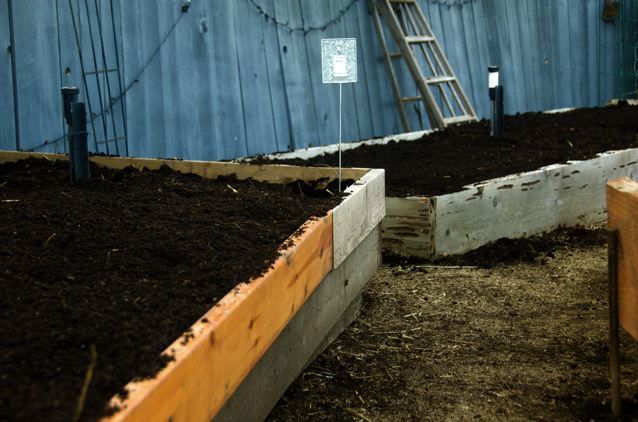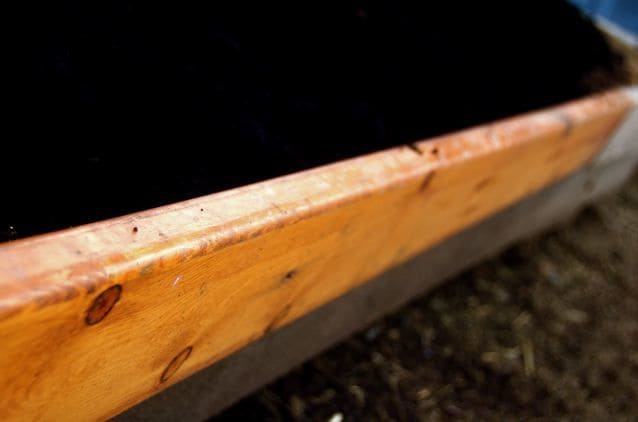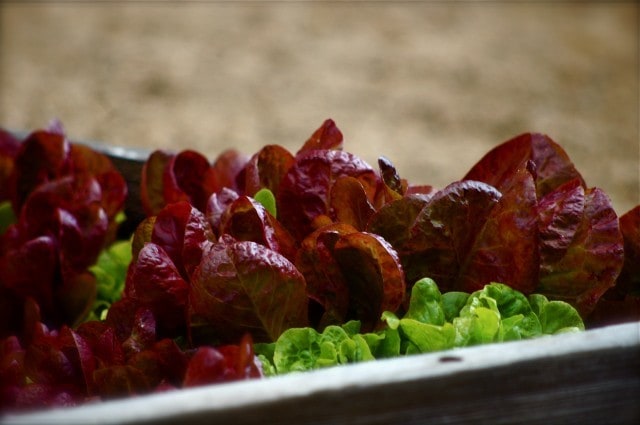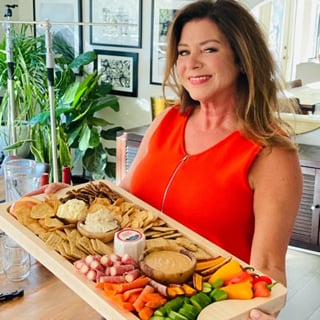Gardening and Building Raised Beds in the City

I’m excited to be sharing with you my new Gardening Series. Come back each week as I hope to have regular updates throughout the spring/summer months! I will say that my husband has more of a green thumb than I do, but I’m consistently getting more involved and really enjoying it.
There’s just something about growing your own food.
And did you know this? Fruits and vegetables start to lose flavor and nutrients within ONE HOUR of being picked.
So of course it’s ideal for us to grow our own produce in our backyards, even if we live on a city lot.

Which is true for our family because we do live on a city lot. Now it’s a rather large city lot, but when we moved here there was only one small garden bed, which is now our strawberry bed. (above photo)

So we took down trees, moved the dirt around, brought in new dirt, and built raised beds. Just recently we’ve added 3 more raised beds, a couple of years ago we built our $5 compost bin, and last year on Mother’s Day, my husband gave me an herb trough, right outside my back kitchen door.

Why raised beds?
There are two types of garden beds to choose from: raised or mounded. We’ve tried many different ways of growing vegetables over the years, and by far, the most enjoyable method thus far is raised beds. You don’t have to bend down as far and it’s very clear where the garden begins and ends. And if you do it right, you can really minimize the weeds. Also, since the soil in a raised bed is elevated a bit off the ground, it is generally warmer and you can start planting your garden earlier than in a mounded bed.

How to build the beds
For a city lot, by and large, raised beds are the most attractive, too. To get started you have two choices: lumber yard wood (very expensive 2×12 in either punky cedar or redwood) which lasts much longer than other forms. It looks fantastic, too! You can even stain the wood. If you know the dimensions that you need, they’ll even cut it ahead of time and when you get home you can screw the beds together.
Remember to recycle
The other choice is scavage wood scraps. We used wood from our kitchen remodel, and most recently we recycled our kids’ old bunk beds. But look around and see who is getting rid of wood or scraps.
-Draw out your backyard on paper and where you want to place your garden beds (to scale, if you can).
-Make a frame about 1 foot high, and 4 – 8 feet long x 4 feet wide. (Length doesn’t matter as much as width.)
-Plop it down on the area that you want the bed to be placed. Make sure to use a level to level it out.
-Place newspaper or brown paper bags on the bottom area and water.
-Place compost inside the frame, topping with organic gardening soil.
In our back yard, some of our beds are wider than 4 feet. That’s because of the overall shape of our backyard. We wanted to maximize the garden space as much as possible, so we went wider. But you’ll find people who do kitchen remodels or home improvements often will just let you have their leftover wood!

Bunk beds turned raised beds
Our newest bed has a little bit of sentimental value to me. This last year we no longer needed our bunk beds, as one son moved to college and the other 2 teens got larger beds. It was sad to see everyone outgrow the bunk beds! Each kid had this set in their room at one time or another. A bed for them and a bed for their friends to spend the night. :) Anyway, to the side of the house the wood went, and my husband had in mind that he’d make more raised beds with it.
Here’s a little sneak peek of what our beds will be producing in another month or so … mouth-watering lettuce. The best ever when it comes straight from the garden.

Well, enough for today. I’ll be exploring more about gardening in the weeks to come, and of course we all know that each garden is different depending on what zone you live in.
Do you have raised beds, mounds, plants in pots, or is gardening “new” to you this year?
[Please feel free to leave me any comments/questions for future posts.]
One year ago I wrote 2 simple gardening posts:
New Gardener Part 1: Get Started Now
New Gardener Part II: Water, Sunshine, Soil





Pingback: Gearing up for Garden Season in the City | LivingBetter50
Pingback: Finding Your Garden Zone, Spring Raised Beds Planting, and Ryobi Tiller | Reluctant Entertainer
Just wondering — do you guys rotate crops in your raised beds? I’ve noticed that production has dropped off over the years in my raised beds (even with adding compost) and think I’m about to do the 4-crop rotation system, where you follow certain crops with others to add nutrients back into the soil and add rootiness to make the soil more friable for the next crop.
Zone 7B also (in Atlanta)!
Melissa, we do rotate what’s in the beds. IE, we don’t usually put the tomatoes in the same place every year. But, honestly, we don’t put a lot of thought in to doing that.